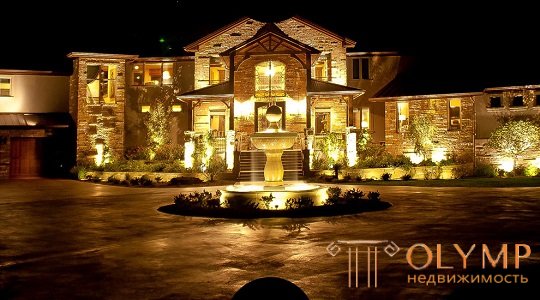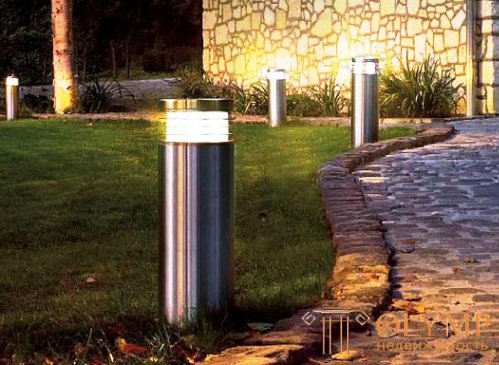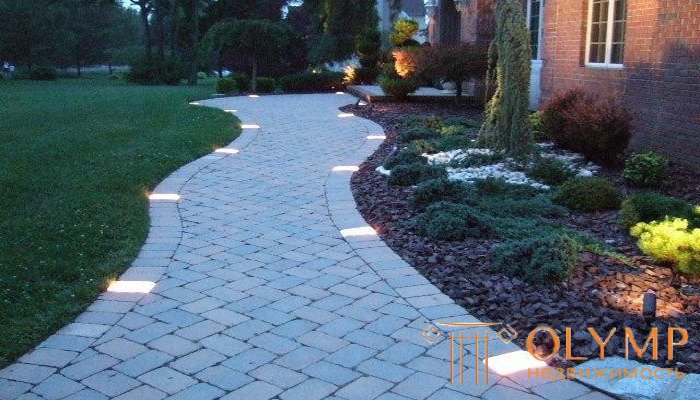
How to choose a suitable and reliable street lamp? This is a very difficult task, the solution of which must be remembered that the street lamp not only performs the function of lighting in the dark, but is also a decorative structure. How to make the right choice so that the lamp was both beautiful and practical?
 Existing to date lamps can be divided into several types of groups: console, floor lamp, linear and landscape garden lamps. When choosing a lamp of each type has its own subtleties and nuances.
Existing to date lamps can be divided into several types of groups: console, floor lamp, linear and landscape garden lamps. When choosing a lamp of each type has its own subtleties and nuances.
Lamps that are of the console type are used to illuminate roads, streets, courtyards, squares, underground and pedestrian crossings, as well as in buildings that have large areas, spacious rooms, such as a gymnasium or an indoor stadium. For these types of street lamps are used supports that have the shape of the letter "G". Install such a support should be at an angle of fifteen degrees. In the console lamps used sodium or mercury types of lamps. It should also be noted that the luminaires of this group are distinguished by greater durability and longer service life (operation).
Lamps that are of the floor lamp type are used in cases when it is necessary to illuminate large areas with a large amount of open space. Such lamps are installed at the very top of their support. This is justified by two reasons: they should illuminate a large area and should not interfere with people walking in the place that is illuminated by this lamp. These lamps are most in demand when illuminating decorative objects such as flower beds or lawns in various parks and gardens. Especially aesthetically appropriate, they look in the parks.
Lamps that belong to the landscape-park type, of course, are usually used in parks and gardens, as well as squares. Similar lamps differ in a special variety and at the same time amazing originality. This is due to the fact that in such places it is necessary to illuminate various green spaces or architectural structures, for different types of which appropriate, original lighting is necessary.
Lamps that are of the linear type are used when necessary to illuminate architectural buildings or to illuminate streets and courtyards. The body of this type of luminaire is often made of aluminum, and the glass is made of heat-resistant and carefully protected from a variety of mechanical damage type. It is possible to install lamps of this type on both vertical and horizontal supports of various types. This type of lighting fixtures can be divided into three main subtypes: street poles, lanterns, luminaires recessed into the ground.
Lanterns must be installed to illuminate the private cottages, estates. Such a subtype of linear lamps not only illuminates the surrounding space in the evening and at night, but is also a stylish decorative decoration of the site. Most often, halogen lamps are used when lighting lanterns.
The columns in most cases prefer to install on the sides of the main walkway or along all the paths in the garden. Such lamps illuminate the paths in the dark and are considered a decorative annex to the garden.

Recessed luminaires are similar in their basic lighting functions to lanterns and poles,
but, unlike them, they are most often used to underline the light contour around the pools and near decorative flowerbeds with flowers.
Front lighting looks quite interesting on office buildings, but in this case it is better to direct the light rays from the bottom up. Facade luminaires not only illuminate buildings, but also ennobles the interior near the building.
In the fashion today as the lamps for the facade, made in the form of mysterious medieval lanterns. Such products favorably emphasize the beauty of small country houses, making them more comfortable.

Facade luminaires can be equipped with halogen lamps, which are characterized by ideal indicators of color rendering, or LEDs.
As a rule, front lamps for private lighting are completed with LED lamps. LEDs are characterized by high reliability and efficiency. Front lights can also be equipped with fluorescent lamps.
Among the main advantages of these are aesthetics, cost-effectiveness of lamps. Such lamps do not warm the street and consume the minimum amount of energy. The choice of facade lighting should be ideally combined with the design and architecture of the building. They should be suitable for the building in color, size and concept. Competently picked up front lamps will help to present any building as profitably as possible. They will become the most important detail of the exterior, arresting the eyes of passersby.
There are several lighting techniques that are used when using landscape gardening lamps. The main ones are local, pouring and pouring techniques. This type of lighting is most often used to illuminate decorative landscape objects: flower beds of lawns, low vegetation, and so on.
It should be noted that when choosing these lamps, it is necessary to pay special attention to their parameters such as usage time, susceptibility to various mechanical damages, and in addition, the light output level of lighting devices.
Supports street lamps are pillars of various types and forms. Such pillars must be distinguished by special reliability, durability, stability and, moreover, efficiency. Attention should also be paid to the resistance of pillars to mechanical damage. Most often, supports for lamps are made of metal sheets. In addition, the design requires a flange that must be installed in a foundation made of concrete or reinforced concrete.
There is also a type of support, such as faceted supports, which are used for console lighting devices.
Что бы оставить комментарий войдите
Комментарии (0)